COLOMBIASILVIA ROJAS
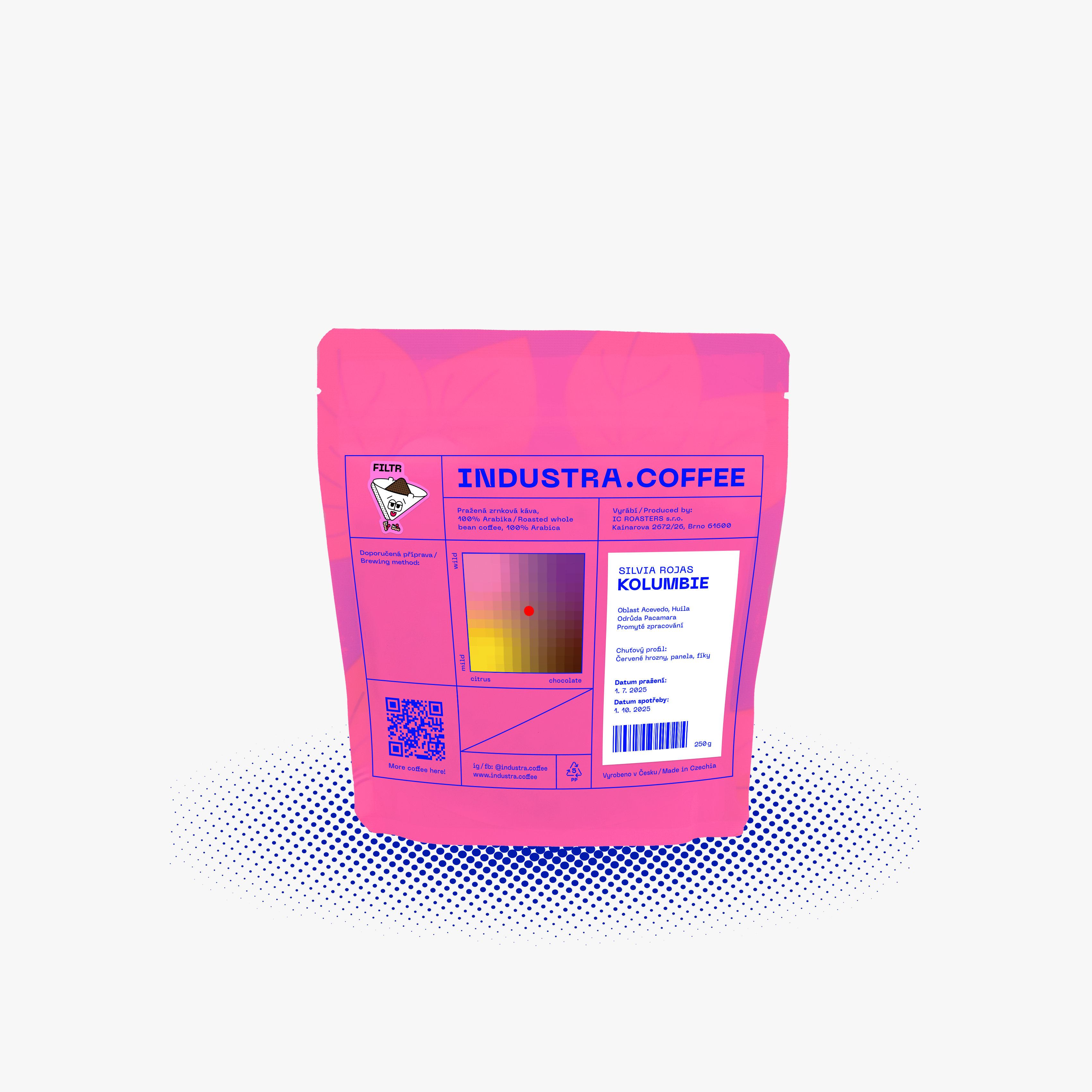
18,45 € – 65,40 €

| Weight | 1kg, 250g |
|---|---|
| Farm | Acevedo, Huila |
| Processing | washed |
| Cultivar | pacamara |
| Flavor profile | Grapes, panela, figs |
| Type of coffee | 100%arabica, specialty coffee, coffee beans |
| Manufacturer | IC ROASTERS s.r.o., Kainarova 2672/26, 61600, Brno, CZ |
Method:
V60
Coffee to water ratio:
15g/ 250 g
Temperature:
95 °C
Extraction time:
2:20
About coffee:
Silvia and Guillermo co-own and run a 4-hectare farm growing two main crops: coffee and dragonfruit. In terms of coffee, they cultivate Castillo and Pacamara varietals. Since 2023, our importer Minga has proudly introduced their Pacamara to the specialty coffee market. Prior to that, the couple sold all their coffee to local commodity buyers. Since finding a higher paying market the couple has been experimenting with fermentation, while keeping the traditional washed processing method. Minga brings support through cupping and sensory feedback. So far the process leading to the cleanest, sweet and fruity profile is to oxidate cherries for 36 hours before depulping, and then ferment the depulped seeds in a closed bag for another 36 hours. This differs from the 24h fermentation in open tank they used to do for all their coffees.
Five years ago, while planning to plant more trees, Silvia found out her brother-in-law had some pacamara seeds lying around, a gift from a neighbor that had been left unattended. Curious to try them out, planted them on the highest part of the farm at 1,650 masl. Five years later, the trees are fully grown, and the couple has discovered the cup quality of this varietal. But they’ve also realized they planted them too close together—at the same density as a Castillo—and that this varietal needs more space to grow properly. It is today very difficult to walk around the plot, let alone pick cherries or apply fertilizers. They’ve now decided to selectively remove some trees to give the others more space. This is a major shift in the farm’s design, but the goal is to boost both productivity and quality— even with fewer trees—by improving light exposure and airflow for the ones that remain.
In 2021, as Covid forced everyone into isolation, Silvia and Guillermo recognized the importance of growing their own food. They began diversifying their crops and now harvest mango, guanabana, pitaya, papaya, tapioca, and more, both for their own consumption and for extra income. As part of farm management, they maintain vegetative ground cover between the coffee trees to capture and store water, prevent soil and nutrient erosion, and enhance the soil’s biological life.
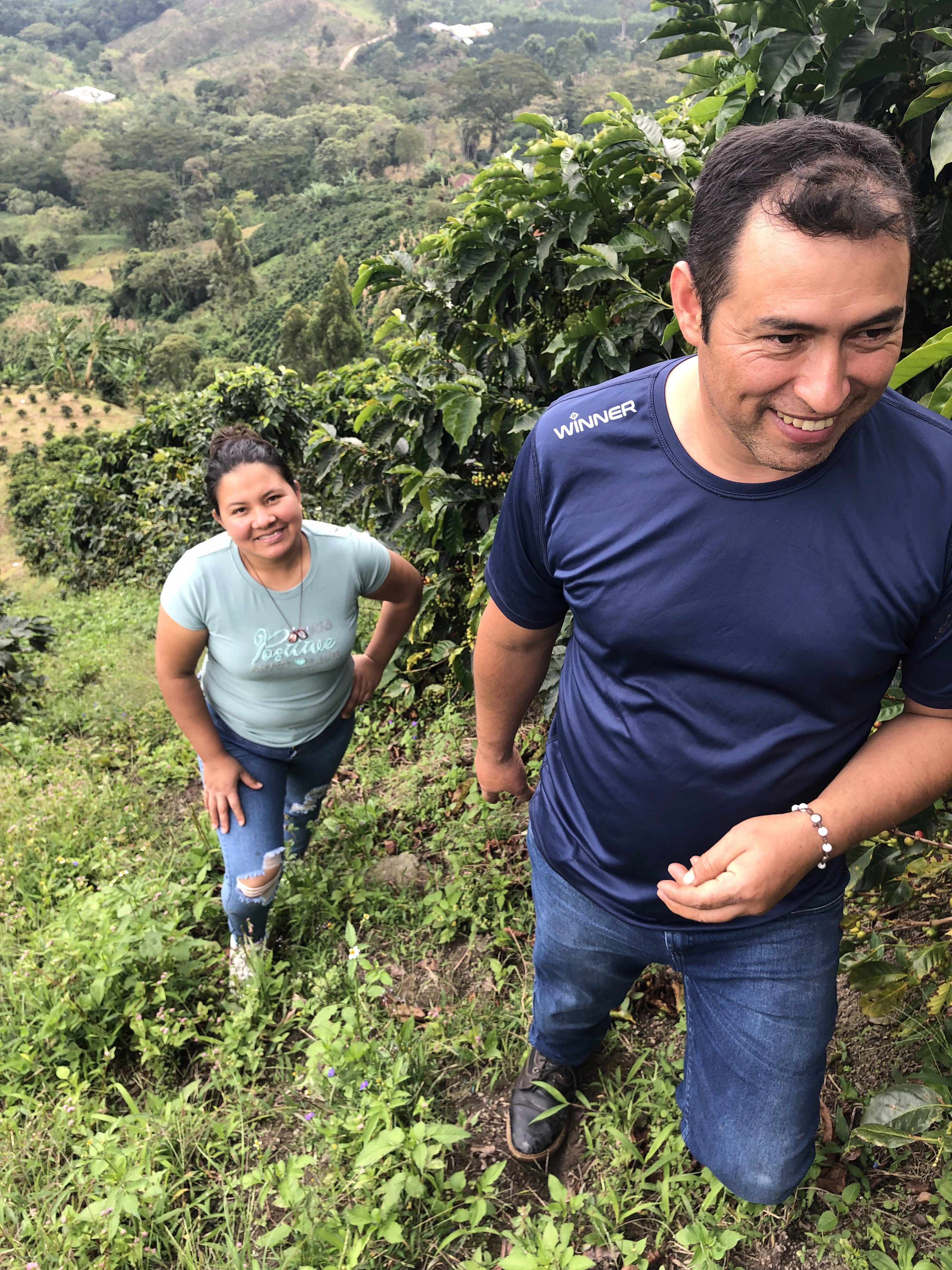
We wanted to make it as easy as possible for you to choose your coffee, so we worked with the guys from Steezy Graphic Studio to come up with a “grid” – a simple grid where you can easily find the characteristics of each coffee.
The red dot next to the description of each coffee is placed exactly there, so that you can easily imagine how the coffee will taste.
Citrus – chocolate
Here we’d like to give you an idea of how fruity the coffee will be. There’s a long way from citrus to chocolate, so imagine more in between:
citrus, berries, green apples, red apples, stone fruits, dried fruits, nuts, milk chocolate and dark chocolate 😉
Mild – wild
What is mild coffee? We’d say it’s unpretentious. A coffee that you can just have every morning and not have to think too much about it. It’s just good.
The higher the dot, the more excitement you can expect in the taste of coffee. The more surprising and fun it can be. These coffees are fruity, fun, interesting and make you think about what it is that you actually enjoy about them so much.
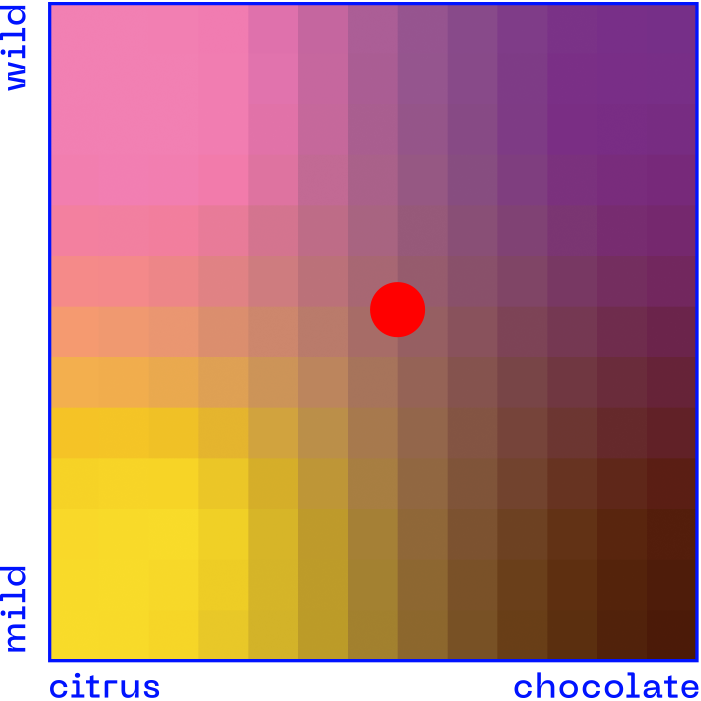




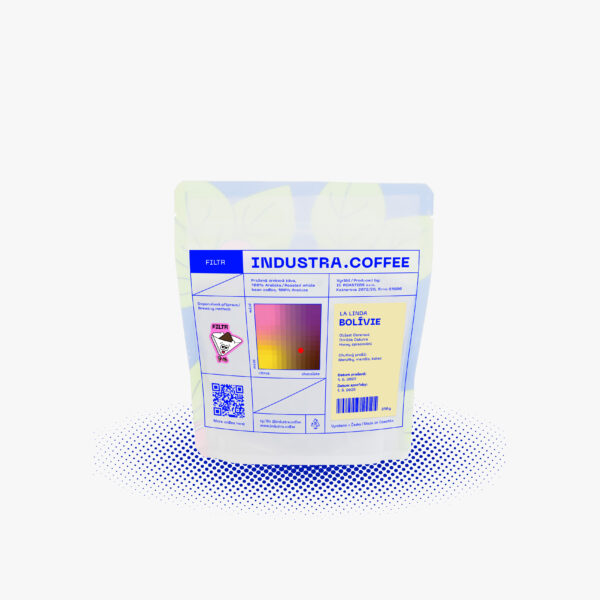
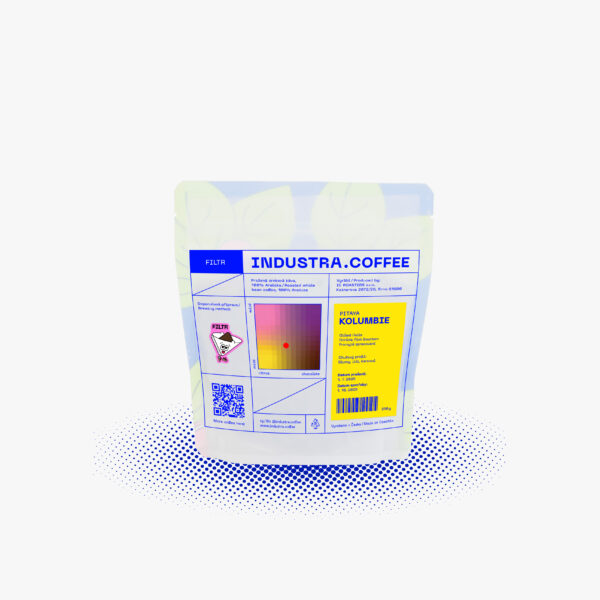
 try our coffee at home or in our café
try our coffee at home or in our café